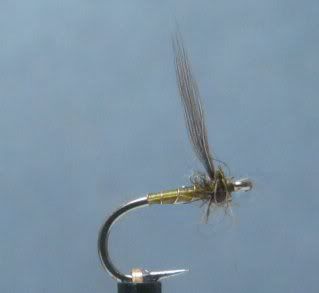Boasting again Mike

- I'm joking off course.
You are of course correct, if you only get out infrequently then progress will be slow and lessons learned per season will be few. Okay, I have fly fished for nearly 28 years but only 7 or eight of those are river fishing for browns, previous twenty was almost exclusively Salmon and Sea Trout. I can honestly say that the first four seasons hunting brownies I was a headless chicken, not a clue. Hard work, reading, arguing on forums, finding decent local anglers - indeed anything that would extract useful information. If at times I appear a little argumentative on this forum, on topics such as this it is down to an unerring desire to learn beyond the dummies guide to fly fishing.
In all these discussions, it is amazing what one can learn - what one person may consider a simple concept for others it can be difficult to grasp - such is the way of life.
The complexity that is imitative fly fishing is compounded by little time to learn. If we take LDO's of spring, though lessons can be learned through other olive hatches, in any one season one is limited to really a few weeks to attempt to master the LDO's. Now if one can only get out two or three times in that period then one is at an immediate disadvantage.
Little snippets of knowledge , such as emergers are not the best approach for LDO's or that trout often prefer taking Iron Blues just subsurface ... these are invaluable gems of information to those with meagre time on the water. If anyone has other such info on other common hatches please free to share it

The old axiom always applies, if you believe someone has knowledge that may benefit you, like a challenging trout, you have to cast various flies until you ask the right question to get the right answer , but cast carefully, people can be put down as quick as any trout and always remember to say thanks.

 . I met the creator of the fly last september when he had caught his largest grayling on it. It was a cock fish of 63 cm which was extracted from considerable depth. I am just trying to fit this result into this discussion.
. I met the creator of the fly last september when he had caught his largest grayling on it. It was a cock fish of 63 cm which was extracted from considerable depth. I am just trying to fit this result into this discussion. Like this one?
Like this one?